Recess is not just a break for kids in school. It’s important to take a break and engage in fun activity in any environment in order to stay energized and engaged. Yet the concept of recess seems to suggest giving people permission to slack off and be unproductive.
Nothing could be further from the truth. In today’s high-stakes testing and competitive work world, taking a break to be active is frowned upon and disappearing from the daily lives of children and adults. School days are getting longer, and there is a blur about when the work day begins and ends for today’s adults.
Brain research shows that after bouts of physical activity the brain is more engaged than ever and ready to spark on all cylinders. Evidence shows that people are more alert and focused after physical activity, resulting in more productive engagement of the brain. The task at hand gets a new and energized look after being active.
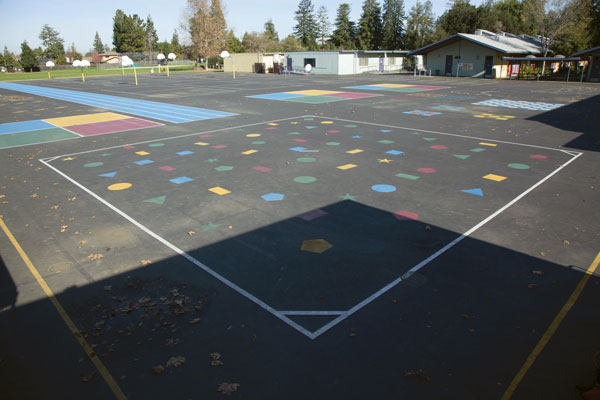
Physical Activity Recommendations
In the 2008 Physical Activity Guidelines for Americans, the U.S. Department of Health and Human Services made the recommendation that children and adolescents should engage in 60 minutes of physical activity each day. Adults should do at least 150 minutes (2 hours and 30 minutes) a week of moderate-intensity, or 75 minutes (1 hour and 15 minutes) a week of vigorous-intensity aerobic physical activity, or an equivalent combination of moderate- and vigorous-intensity aerobic activity. Engaging in the recommended amounts of physical activity doesn’t need to be accomplished all at once. Physical activity breaks are a manageable way to fit in physical activity. Yes, that means recess.
Strategies for Recess
Recently the National Centers for Disease Control and Prevention (CDC) partnered with SHAPE America (Society of Health and Physical Educators) to develop guidance for schools to support recess and active play that can benefit student health, wellness, and academic achievement. After reviewing peer-reviewed articles, guidelines, reports, and resources from government agencies and non-governmental organizations, 19 strategies that help increase participation in physical activity and improve academic achievement were identified.
The strategies are organized around logical categories that chart the actions to take when planning for recess and creating the optimal environment that invites physical activity. There is more to it than installing structures and expecting kids and people of all ages to be motivated to move.
Make Leadership Decisions
In schools, leaders must make decisions about policies regarding recess, where it will be held, and how it will be supervised. Supervision and training do not prescribe what children will participate in during recess, but they do ensure a safe environment with optimal security for healthy play.
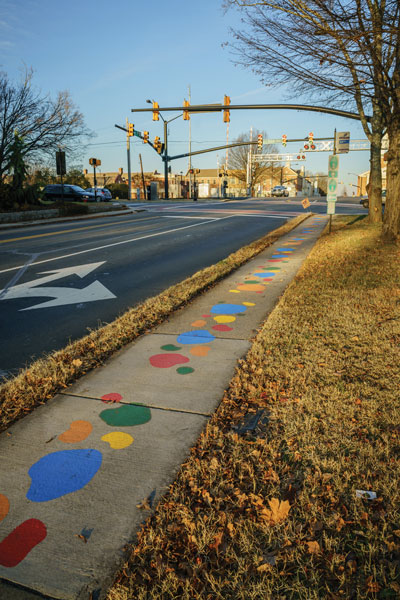
For recess to be a safe place to play, a number of considerations must be addressed. Safe spaces and facilities that meet nationally recommended safety standards, and are regularly inspected, are critical to an injury-free and bullying-free recess. Establishing appropriate behaviors in the play setting is very important.
Since school playground facilities are often part of a city or county parks and recreation system, this category is often a joint responsibility of local government and the education system. Collaboration is critical if youth are to have access to safe play spaces with common expectations for use, both during school hours and when schools are closed.
Create an Environment Supportive of Physical Activity During Recess
This group of recommendations has the most supporting research for promoting physical activity and can make the strongest impact on physical activity engagement before, during, and after school hours. Providing physical activity equipment, adding markings to the playground or physical activity spaces, creating physical activity zones, and providing planned activities or activity cards all encourage and invite people of all ages to engage in physical activity. Providing a combination of as many of the above strategies as possible can result in greater physical activity engagement. More on that later.
Engage the School Community to Support Recess
These strategies involve establishing roles and responsibilities for providing recess, supporting the recess program at a school, and involving students in the planning and implementation of activities. It is always a win-win when the entire school community rallies around a program to support it financially and with a strong supportive presence. Engaging the school community to advocate for active play is the recipe for success and longevity.
Gather Information on Recess
As with any program, tracking the progress of a program involves observing what happens and gathering information on the results. School recess can positively affect student attention in class, attendance at school, positive behaviors, collaboration and social skills, and general academic achievement. Tracking these results is important to garner the support needed to sustain recess over time.
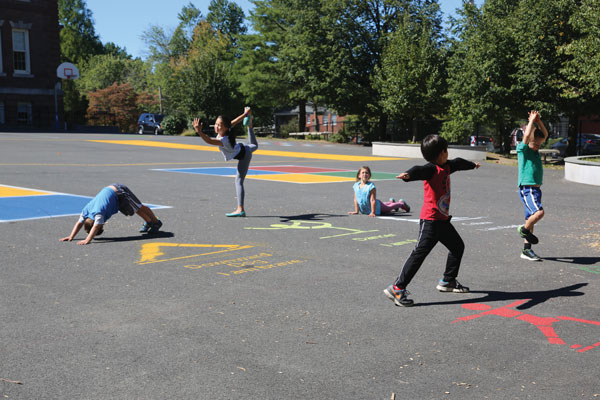
Other Benefits of Recess
Recess provides many other benefits to youth as they are growing up. During recess, kids practice activities they like in an informal setting with their friends, often the gateway for their selection of sports and other activities that they will choose for a lifetime. Ongoing research shows that multiple sport athletes become better athletes after high school. Self-efficacy for participation in a wide variety of activities will likely result in a young person who is confident in the many options of physical activity they can and will participate in for life.
Recess Outside of School
Though the recess environment of a school playground is largely focused on what will occur during school hours, playground professionals should also consider what will happen in parks and playgrounds outside of school hours. Families often bring their children to playgrounds outside of school hours and on weekends for outdoor play. Families who are homeschooling their children are using parks as their physical education venue.
It’s important that the playgrounds and parks that are not part of a school property invite play that can be engaged in by people of all ages. Let’s take a look again at the category related to creating a physical environment that supports physical activity.

Inviting Play
It’s necessary to take a realistic look at play spaces and be responsive about meeting the needs of the user. In one community where I lived, we were considering a playground renovation at a school I worked at where students ranged in age from ages 5-10. To research what was available locally, I went to every school playground to see how the other spaces invited play.
After observing each space and taking photos, it was evident that the facilities were mostly paved spaces that had not been maintained for a long time. There were large cracks in the pavement with grass growing in them, no markings for play, and broken structures, where they existed at all. Some of the structures were too tall to be used by the students at the schools they were located at and were set at adult heights. The spaces did not invite play, and students were outside playing, but avoiding these spaces.
Planning is Critical
The challenge is being mindful of the users of various play spaces. School playgrounds should be planned with the age of the users as the primary audience. In a school with 350 students, 700 feet will step out onto that playground every day. Research shows that during recess, a student will take 1,062 steps. If the students participate in recess every day, that is 371,700 steps in one day! With about 180 days of school each year, that is nearly 67 million steps per day on the playground. That certainly makes the case for who is the primary user for a school playground.
It also makes the case for installing structures that can be used by the intended age group. For an elementary school, basketball or other goals should be installed at a height appropriate for the age range using the goals, not the standard adult heights that kids cannot reach while practicing. Middle and high schools are more suited to regulation height goals and court markings.
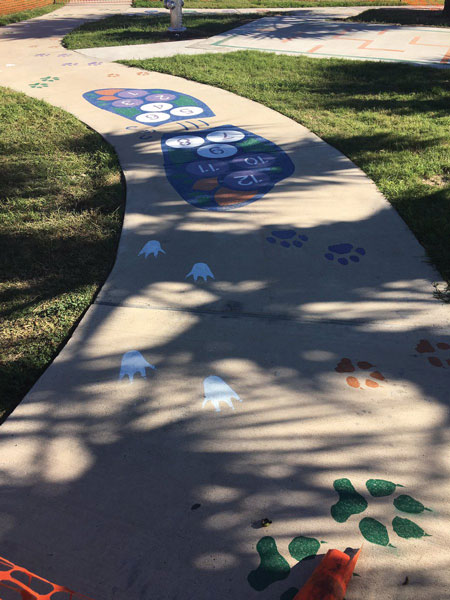
Markings Motivate
One of the most cost effective and motivating strategies is the installation of markings. Markings invite play that is creative, personal, and does not necessarily involve equipment. With mindful planning, markings can create zones that promote individual play, small group play, team play, or parent-child play. They can be installed on paved surfaces, sidewalks, at bus stops, walls, and create activity paths from one location to another.
Markings can be used by children and adults of all ages and of all ability levels. Colorful markings invite play and interaction, during planning, installation, and after they are installed. They can turn a summer sprayground into an activity space during cooler months, create an active path from school to downtown, and keep a young child active in a park. Markings can direct families along a fitness trail with challenges for both child and parent, all without equipment or consumable supplies. The potential with markings and the planned activities that they can direct is unlimited and do not require special supervision.
Lifetime Activity
The critical time to teach youth that being active is fun is during their early years. Being physically active as kids teaches them skills that transfer across their childhood. Confidence in the skills they have learned motivates them to select their favorites by the time they reach high school.
For most kids, these important and early successes are fueled by the positive experiences that they have engaged in on a school playground or local park, reinforcing the lifelong impact of local parks and playgrounds on the future of community physical activity.
Photos courtesy of Patrick Daniel Trombly and Fit and Fun Playscapes


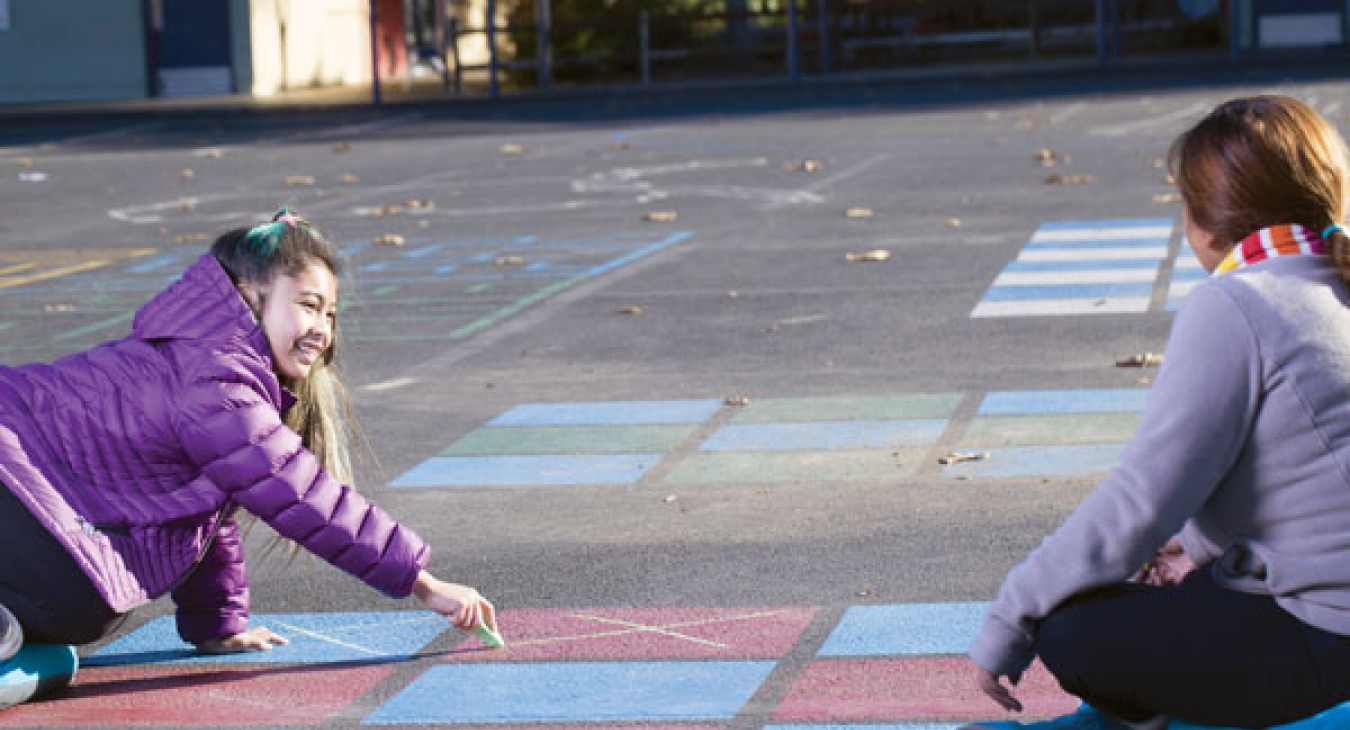
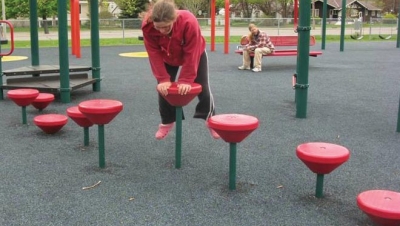
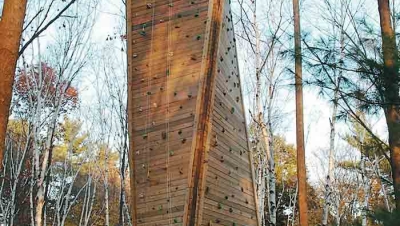






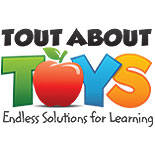





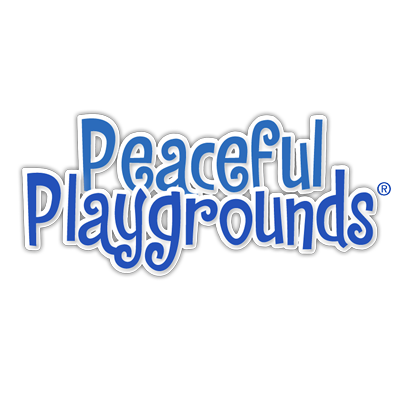
Add new comment